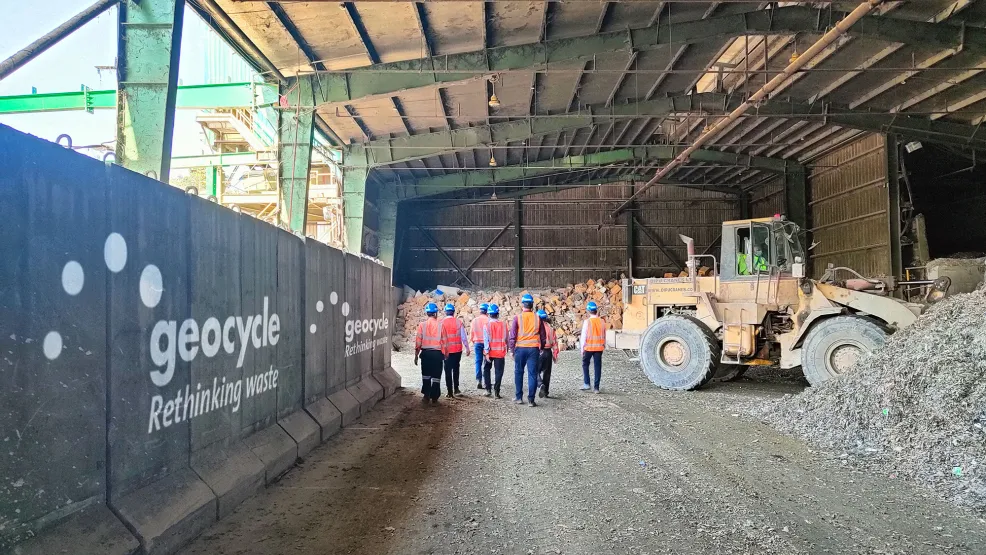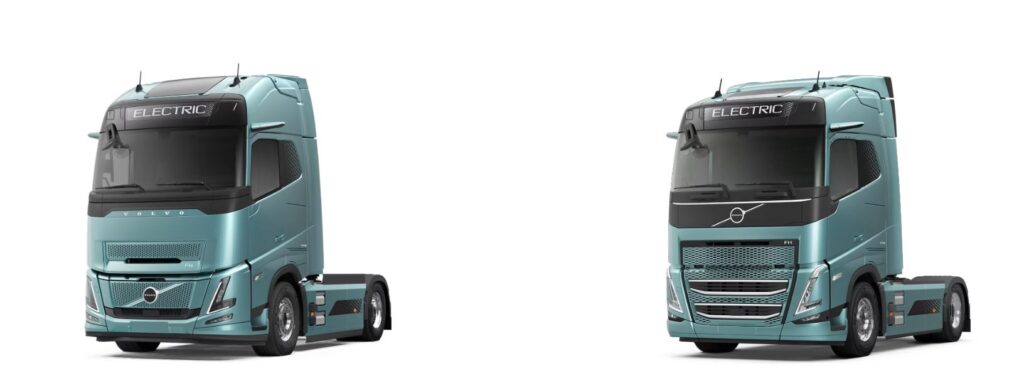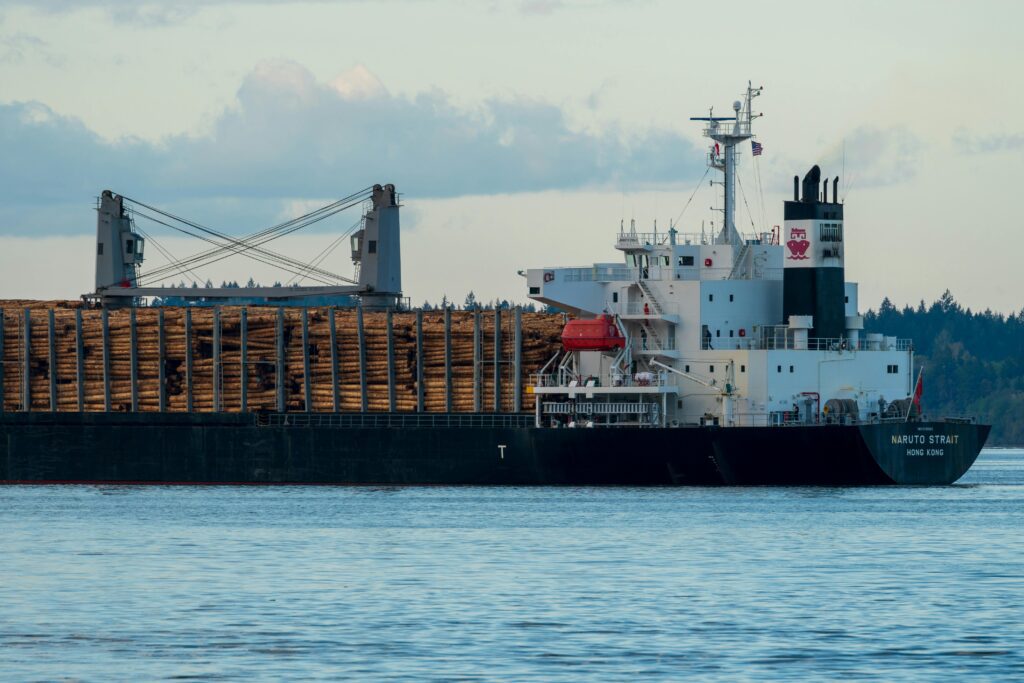Shipping is a critical component of global commerce, but it comes with a hefty environmental price tag!
Did you know that maritime shipping alone accounts for approximately 2.5% of global greenhouse gas emissions? The good news? Your business can make a significant impact by adopting eco-friendly shipping practices.
In this guide, we’ll walk you through practical, innovative strategies to green up your logistics while potentially saving money and enhancing your brand’s reputation.
As a logistics professional, I have seen how the brands, shipping lines, shippers, buyers, and govt. institutions are focusing on reducing carbon emissions from logistics.
I will share how we can implement eco-friendly shipping practices that will help our environment as well as reducing the logistics cost.
Understanding Eco-Friendly Shipping Fundamentals: A Comprehensive Exploration
Defining Eco-Friendly Shipping: More Than Just a Buzzword
As a logistics professional, I always imagine shipping as a global ecosystem – every package, every mile traveled leaves a footprint. Eco-friendly shipping isn’t just a trend; it’s a critical transformation of how we move goods across our planet!
What Exactly is Eco-Friendly Shipping?
Eco-friendly shipping is a holistic approach to logistics that minimizes environmental impact while maximizing operational efficiency. It’s about making smarter, greener choices at every stage of the transportation process.
| Key Characteristics | Traditional Shipping | Eco-Friendly Shipping |
|---|---|---|
| Carbon Emissions | High and Unmitigated | Reduced and Offset |
| Packaging | Single-use Materials | Recyclable, Minimal |
| Transportation | Inefficient Routing | Optimized Routes |
| Fuel Sources | Fossil Fuel Dependent | Alternative/Renewable Fuels |
The Environmental Stakes: Why Every Shipment Matters
Buckle up for some eye-opening statistics! Global shipping accounts for approximately 2.5% of worldwide greenhouse gas emissions. That might sound small, but it translates to nearly 1 billion tons of CO2 annually. As someone passionate about our planet’s future, I find this both challenging and exciting – we have a massive opportunity to create meaningful change!
Carbon Footprint Breakdown in Logistics
Let’s break down where those emissions really come from:
- Maritime Shipping: 40% of logistics emissions
- Trucking: 35% of logistics emissions
- Air Freight: 20% of logistics emissions
- Rail and Other: 5% of logistics emissions
Identifying Key Areas for Sustainable Transformation
Transforming shipping isn’t about perfection – it’s about progress. Here are the critical areas where businesses can make significant impacts:
- Packaging Revolution
- Eliminate single-use plastics (Single-use plastics are goods that are made primarily from fossil fuel–based chemicals (petrochemicals) and are meant to be disposed of right after use—often, in mere minutes. Single-use plastics are most commonly used for packaging and serviceware, such as bags, bottles, wrappers, and straws.)
- Implement biodegradable materials (Biodegradable materials are mainly PLA (Polylactic Acid) based materials. These are derived from renewable resources like Corn and Potato which are biodegradable under the right conditions.)
- Design right-sized packaging (Right-size packaging minimizes material use while maintaining product protection and branding. It saves money on shipping, supports sustainability, and maximizes shelf space in distribution centers.)
2. Transportation Optimization
- Use route planning algorithms (Route optimization is essential for reducing carbon emissions by minimizing the travel distance, improving fleet utilization and reducing idle time.)
- Invest in electric and hybrid vehicles (These produce lower or zero tailpipe emissions, reduce air pollution and greenhouse gas (GHG) emissions, and help in mitigating climate change.)
- Consolidate shipments (Consolidated shipping is a method where businesses combine individual shipments from various customers into a single shipment. This delivery method can help you organize individual orders into a single shipment and generate a single tracking number for the shipment instead of multiple shipments. shipment consolidation contributes to sustainability efforts by minimizing carbon emissions and energy consumption associated with transportation.)
3. Fuel and Energy Innovations
- Explore alternative fuel sources
- Implement hybrid and electric transportation
- Use renewable energy in warehousing

Long-Term Business Benefits of Green Shipping
We should not think sustainability is just an expense. We need to think again. Here’s how eco-friendly shipping can boost our bottom line:
Financial Advantages
- Reduced fuel costs
- Lower packaging expenses
- Tax incentives and credits
- Enhanced brand reputation
Competitive Differentiation
- Attract environmentally conscious consumers
- Meet emerging regulatory requirements
- Position as an industry leader
Operational Improvements
- More efficient logistics
- Better route planning
- Reduced waste
- Improved supply chain resilience

Practical Takeaway
Start small, but start now:
- Conduct a carbon footprint audit
- Set realistic reduction targets
- Invest in one sustainable technology
- Train your team
- Communicate your progress transparently
Don’t aim for perfection – aim for continuous improvement. Each small step creates a ripple effect in sustainable logistics!
Packaging Optimization Strategies: Your Eco-Friendly Revolution Starts Here!
The Packaging Paradox: From Problem to Opportunity
Believe it or not! Every year, we generate millions of tons of packaging waste that could wrap around our planet multiple times! But what if I told you that packaging could be a solution, not just a problem? Welcome to the world of sustainable packaging optimization – where creativity meets conservation.
Selecting Recyclable and Biodegradable Materials: Nature’s Packaging Toolkit
Material Magic: From Waste to Wonder
Imagine packaging that doesn’t just protect our product but protects our planet. Here’s a breakdown of nature’s most incredible packaging materials:
| Material Type | Decomposition Time | Eco-Impact | Best Used For |
|---|---|---|---|
| Corn-based PLA | 180 days | Low Carbon | Food Packaging |
| Mushroom Packaging | 30-90 days | Zero Waste | Fragile Items |
| Hemp Fiber | 100 days | Regenerative | Electronics |
| Seaweed Packaging | 4-6 weeks | Marine Friendly | Liquid Products |
What we should look at:
- Choose materials that biodegrade naturally
- Prioritize renewable resources
- Look for certifications like “compostable” and “biodegradable”
Minimizing Packaging Waste: The Art of Less is More
Let’s get real – most packaging is just unnecessary drama! Here’s how we can cut the waste:
🔹 Audit Your Current Packaging
🔹 Eliminate Unnecessary Layers
🔹 Design for Minimalism
🔹 Implement Precise Sizing Strategies
Waste Reduction Scorecard
- Plastic Packaging Reduction: Up to 60%
- Carbon Footprint Decrease: 40-50%
- Cost Savings: 20-30%
Innovative Eco-Friendly Packaging Alternatives
Some game-changing innovations that’ll blow your mind:
Mycelium Packaging
- Grown from mushroom roots
- 100% biodegradable
- Shock-absorbing properties

Seaweed Water Pouches
- Edible packaging
- Zero waste
- Nutritional potential

Agricultural Waste Packaging
- Made from rice husks
- Supports circular economy
- Reduces landfill burden

Right-Sized Packaging: Precision is Power
Think of packaging like a tailored suit – it should fit perfectly!
Optimization Strategies:
- Use AI-powered package sizing algorithms
- Implement custom box generation
- Leverage machine learning for precise measurements
- Reduce void fill materials
Cost-Effective Sustainable Techniques
Who says going green costs more? Let’s break the myth:
- Bulk Material Purchasing
- Standardized Packaging Designs
- Local Material Sourcing
- Invest in Reusable Packaging Systems
Initial Investment Breakdown
- Bulk Material Purchasing:
- Upfront cost: $2,000–$5,000
- Description: Large-quantity purchasing reduces per-unit costs and minimizes transport-related emissions.
- Standardized Packaging Designs:
- Upfront cost: $1,500–$4,000
- Description: Simplified designs lead to less waste and greater production efficiency.
- Local Material Sourcing:
- Upfront cost: $1,000–$3,000
- Description: Decreases transportation costs and supports local economies.
- Reusable Packaging Systems:
- Upfront cost: $500–$3,000
- Description: Reduces waste disposal costs and long-term purchasing needs.
Annual Savings Breakdown
- Bulk Material Purchasing:
- Savings: $5,000–$15,000 annually
- Key driver: Lower material and transportation costs.
- Standardized Packaging Designs:
- Savings: $4,000–$10,000 annually
- Key driver: Reduced material usage and design efficiencies.
- Local Material Sourcing:
- Savings: $6,000–$12,000 annually
- Key driver: Reduced transport costs and shorter lead times.
- Reusable Packaging Systems:
- Savings: $5,000–$13,000 annually
- Key driver: Reduced repurchasing and disposal expenses.
Return on Investment (ROI) Timeline
- Initial Investment Range: $5,000–$15,000
- Annual Savings Range: $20,000–$50,000
ROI Period: 6–18 months
- Example: An upfront investment of $10,000 could yield $30,000 in annual savings, recouping the cost within 4 months and delivering significant profits thereafter.
Implementing these sustainable techniques is not only environmentally responsible but also economically advantageous. Companies can achieve short ROI timelines while significantly reducing operational costs and aligning with consumer demand for greener practices.
Transportation and Routing Efficiency: Navigating the Green Logistics Revolution
The Transportation Efficiency Imperative
In the world of modern logistics, every mile matters. Transportation isn’t just about moving goods – it’s about moving them smarter, cleaner, and more efficiently. Let’s dive into the strategies that are transforming how businesses approach transportation and routing.
Optimizing Delivery Routes: The Science of Efficiency
Route Optimization Impact Analysis
| Metric | Traditional Routing | Optimized Routing | Improvement |
|---|---|---|---|
| Fuel Consumption | 100% | 40-60% Reduction | 40-60% |
| Carbon Emissions | Baseline | Significant Decrease | Up to 50% |
| Delivery Time | Longer | More Precise | 20-30% Faster |
| Cost Savings | – | $0.20-$0.50 per Mile | 25-40% |
Key Route Optimization Strategies:
- Utilize real-time traffic data
- Implement dynamic routing algorithms
- Consider multiple delivery constraints
- Factor in vehicle capacity and load optimization
AI and Software: The Game-Changing Technologies
Advanced Route Planning Toolkit
- AI-Powered Route Optimization
- Machine learning algorithms
- Predictive traffic analysis
- Real-time route adjustments
- Adaptive planning capabilities
2. Key Software Capabilities
- Geospatial mapping
- Load optimization
- Carbon footprint tracking
- Predictive maintenance scheduling
Alternative Fuel and Electric Vehicle Revolution
Comparative Vehicle Technology Analysis
| Vehicle Type | Carbon Emissions | Operational Cost | Range | Best Suited For |
|---|---|---|---|---|
| Electric Vehicles | Near Zero | Low | 200-300 Miles | Urban Delivery |
| Hydrogen Fuel Cell | Zero Emission | Moderate | 300-400 Miles | Long-Haul Shipping |
| Hybrid Vehicles | Reduced Emissions | Moderate | 500+ Miles | Mixed Use |
| Biofuel Vehicles | Low Carbon | Competitive | Comparable to Diesel | Regional Logistics |
Electric Vehicle Transition Benefits:
- Reduced operational costs
- Lower maintenance expenses
- Government incentives
- Enhanced brand reputation
- Significant emissions reduction

Strategic Shipment Consolidation
Consolidation Impact Metrics
- Reduce individual trips by 40-60%
- Decrease carbon footprint
- Lower transportation costs
- Improve overall logistics efficiency
Consolidation Tactics:
- Implement shared loading strategies
- Use collaborative shipping platforms
- Develop regional distribution hubs
- Create multi-client shipping networks
Strategic Warehouse Location Planning
Location Optimization Framework
- Proximity to major transportation routes
- Regional market demand analysis
- Infrastructure accessibility
- Renewable energy potential
- Local regulatory environment
Advanced Placement Considerations:
- Minimize transportation distances
- Reduce carbon transportation footprint
- Optimize last-mile delivery efficiency
- Create resilient supply chain networks
Transformational Strategies Checklist
- Conduct comprehensive transportation audit
- Invest in route optimization technologies
- Explore alternative fuel vehicles
- Develop consolidation protocols
- Redesign warehouse location strategy
- Train team on new logistics approach
- Continuously monitor and adapt
Carbon Offset and Neutralization Programs: Our Roadmap to Climate Responsibility
The Carbon Challenge: Turning Emissions into Opportunity
Imagine our shipping operations as a global environmental ledger. Every shipment leaves a carbon footprint, but what if we could balance that ledger – not just zero out, but actually create positive environmental impact? Welcome to the world of carbon offset and neutralization programs!
Understanding Carbon Offset Mechanisms: The Basics
What Exactly is a Carbon Offset?
Think of carbon offsets like environmental karma. It’s a mechanism where we invest in projects that remove or reduce greenhouse gases from the atmosphere, effectively “canceling out” our own carbon emissions.
Carbon Offset Mechanism Breakdown
| Offset Type | How It Works | Impact Level | Typical Investment |
|---|---|---|---|
| Reforestation | Planting trees that absorb CO2 | Medium-Long Term | $10-$50 per ton CO2 |
| Renewable Energy | Funding clean energy projects | Immediate Impact | $5-$30 per ton CO2 |
| Methane Capture | Reducing greenhouse gas emissions | Immediate Impact | $15-$40 per ton CO2 |
| Sustainable Agriculture | Implementing carbon-negative farming | Long-Term Impact | $20-$60 per ton CO2 |
Selecting Reputable Carbon Offset Projects: Our Due Diligence Guide
Red Flags and Green Lights in Offset Selection
Avoid:
- Vague project descriptions
- Lack of third-party verification
- No measurable environmental impact
- Projects without long-term sustainability plans
Look For:
- Certified by recognized standards (Gold Standard, VCS)
- Transparent reporting
- Verifiable environmental benefits
- Positive local community impact
- Long-term sustainability commitment
Calculating and Tracking Shipping-Related Emissions
Emissions Calculation Framework
Scope 1: Direct Emissions
- Fuel used in company-owned vehicles
- Direct operational emissions
Scope 2: Indirect Energy Emissions
- Electricity consumption
- Warehouse energy use
Scope 3: Supply Chain Emissions
- Upstream and downstream transportation
- Supplier emissions
- Product lifecycle emissions
Emissions Tracking Tools
- Carbon accounting software (Carbon accounting software allows organizations to quantify their greenhouse gas emissions, understand their climate impact and set goals to reduce their emissions. For example, Persefoni, Microsoft Sustainability Cloud, Net Zero Cloud by Salesforce, IBM Environmental Intelligence Suite etc.)
- IoT-enabled tracking devices (IoT asset tracking involves using Internet-connected devices—gateways, modules, and GPS/GNSS or other location tracking technologies—to track the location, performance, and condition of mobile assets, vehicles, and equipment. For example, Omnitracs, Hilti ON!Track Asset Management, AT&T Fleet Complete, Azuga, Keeptruckin etc.
- AI-powered emissions calculators (A tool that empowers to measure the environmental impact of projects with precision, backed by the latest research. This tool allows to convert emissions or energy data to the equavalent amount of carbon dioxide (CO2) emissions from using that amount. For example, Climatiq, IBM, Net0 etc.)
- Blockchain verification systems
Investing in Verified Environmental Restoration
Top Verified Restoration Projects
| Project Type | Annual CO2 Absorption | Additional Benefits | Verification Standard |
|---|---|---|---|
| Tropical Reforestation | 10-20 tons per hectare | Biodiversity protection | Gold Standard |
| Ocean Kelp Restoration | 5-15 tons per hectare | Marine ecosystem support | UN Climate Action |
| Regenerative Agriculture | 3-10 tons per hectare | Soil health improvement | Verified Carbon Standard |
| Renewable Energy Infrastructure | Varies by project | Clean energy generation | Clean Development Mechanism |
Transparent Reporting: Our Sustainability Story
Key Reporting Elements
- Comprehensive emissions inventory
- Offset project details
- Progress towards neutrality
- Future reduction strategies
- Third-party verification statements
Our Carbon Neutrality Action Plan
- Conduct comprehensive emissions audit
- Set realistic reduction targets
- Invest in high-quality offset projects
- Implement continuous monitoring
- Communicate progress transparently
- Engage stakeholders in sustainability journey
Financial Perspective: The ROI of Carbon Neutrality
- Brand Value Increase: 15-25%
- Customer Loyalty Boost: 30-40%
- Potential Tax Incentives: $5,000-$50,000 annually
- Operational Efficiency Gains: 10-20%
Building a Sustainable Shipping Culture: The Human Heart of Environmental Transformation
The Cultural Revolution in Logistics
Sustainability isn’t just a strategy – it’s a mindset. Imagine transforming our organization from a traditional shipping operation into a passionate environmental movement. This isn’t about compliance; it’s about creating a genuine culture of environmental stewardship!
Training Staff: The Knowledge Foundation
Sustainable Shipping Education Framework
| Training Module | Key Focus Areas | Impact Metrics | Learning Approach |
|---|---|---|---|
| Environmental Awareness | Climate Science Basics | 90% Comprehension | Interactive Workshops |
| Practical Sustainability | Operational Green Practices | 85% Implementation | Hands-On Training |
| Technology Integration | Green Tech Applications | 75% Skill Adoption | Blended Learning |
| Continuous Learning | Emerging Sustainability Trends | Ongoing Development | Digital Resources |
Comprehensive Training Strategies:
- Create multilevel educational programs
- Develop interactive learning modules
- Use real-world case studies
- Implement gamification techniques
- Provide certification opportunities
Sustainability Incentive Programs: Motivating Green Action
Reward Structure Breakdown
Incentive Categories:
Individual Performance Rewards
- Green Innovation Bonuses
- Eco-Efficiency Recognition
- Sustainability Achievement Badges
Team-Based Incentives
- Departmental Carbon Reduction Competitions
- Collaborative Green Goal Achievements
- Sustainability Team Awards
Financial and Non-Financial Motivators
- Cash Bonuses: $500-$5,000
- Additional Vacation Days
- Professional Development Opportunities
- Public Recognition Programs
- Career Advancement Pathways
Environmental Guidelines: Creating a Clear Roadmap
Comprehensive Sustainability Policy Framework
Key Policy Components:
- Explicit Emissions Reduction Targets
- Sustainable Procurement Guidelines
- Waste Minimization Protocols
- Green Technology Adoption Strategies
- Continuous Improvement Mechanisms
Implementation Approach:
- Collaborate with cross-functional teams
- Ensure leadership commitment
- Create transparent communication channels
- Develop measurable benchmarks
- Regular policy review and adaptation
Fostering Continuous Improvement
The Improvement Cycle
| Stage | Key Actions | Measurement | Outcome |
|---|---|---|---|
| Assessment | Current Performance Evaluation | Baseline Metrics | Understanding Gaps |
| Planning | Strategic Improvement Roadmap | Targeted Goals | Clear Direction |
| Implementation | Systematic Changes | Progress Tracking | Incremental Improvements |
| Review | Performance Analysis | Comprehensive Audit | Ongoing Optimization |
Continuous Improvement Tools:
- Regular sustainability audits
- Employee feedback mechanisms
- Performance tracking dashboards
- Adaptive learning platforms
- External benchmarking
Employee Engagement: Turning Passion into Action
Green Initiative Activation Strategies
Engagement Approaches:
- Sustainability Ambassador Programs
- Volunteer Environmental Projects
- Internal Green Innovation Challenges
- Community Sustainability Partnerships
- Personal Carbon Footprint Tracking
Engagement Success Metrics:
- Participation Rates
- Innovative Suggestions
- Personal Commitment Levels
- Cultural Transformation Indicators
Sustainable Culture Transformation Roadmap
- Conduct organizational sustainability assessment
- Develop comprehensive training program
- Design motivational incentive structure
- Create clear environmental guidelines
- Implement engagement initiatives
- Establish continuous improvement mechanisms
- Celebrate and communicate successes

5 Essential FAQs on Implementing Eco-Friendly Shipping Practices
FAQ 1: How Much Does Implementing Eco-Friendly Shipping Practices Actually Cost?
Cost Breakdown and Investment Perspective
Initial Investment Range: $5,000 – $50,000 (depending on business size)
Long-Term Financial Benefits:
- Potential Cost Savings: 20-40% on operational expenses
- Reduced Fuel Consumption: Up to 60% reduction
- Tax Incentives: $5,000 – $25,000 annually
- Brand Value Increase: 15-25% market perception boost
Strategic Cost Considerations:
- Incremental implementation approach
- Prioritize high-impact, low-cost initiatives
- Leverage government green technology incentives
- Focus on long-term ROI, not just immediate expenses
FAQ 2: What Are the Most Effective Eco-Friendly Shipping Strategies?
Top 5 Transformative Strategies
- Route Optimization Technologies
- AI-powered routing algorithms
- Real-time traffic and emissions tracking
- Potential emissions reduction: 40-60%
2. Alternative Fuel Vehicles
- Electric and hybrid transportation
- Hydrogen fuel cell technologies
- Significant carbon footprint reduction
3. Sustainable Packaging Solutions
- Biodegradable materials
- Minimalist packaging design
- Circular economy packaging approaches
4. Carbon Offset Programs
- Verified environmental restoration projects
- Comprehensive emissions neutralization
- Transparent sustainability reporting
5. Advanced Logistics Management
- IoT-enabled tracking systems
- Predictive maintenance technologies
- Data-driven sustainability decision-making
FAQ 3: How Can Small Businesses Implement Eco-Friendly Shipping Practices?
Scalable Sustainability Approaches
Budget-Friendly Implementation Steps:
- Start with free carbon footprint calculators
- Leverage open-source route optimization tools
- Implement small-scale packaging redesigns
- Join collaborative shipping networks
- Utilize government sustainability resources
Low-Cost, High-Impact Initiatives:
- Consolidate shipments
- Optimize packaging sizes
- Choose local, sustainable suppliers
- Invest in digital tracking instead of physical documentation
- Train staff on basic sustainability practices
FAQ 4: What Certifications Validate Eco-Friendly Shipping Practices?
Recognized Sustainability Certifications
| Certification | Focus Area | Global Recognition |
|---|---|---|
| ISO 14001 | Environmental Management | High |
| Green Shipping Certification | Maritime Logistics | Medium-High |
| SmartWay Certification | Transportation Efficiency | High (North America) |
| Gold Standard | Carbon Offset Verification | High |
| TRUE Zero Waste Certification | Waste Reduction | Medium |
Certification Benefits:
- Credible third-party validation
- Improved stakeholder trust
- Potential competitive differentiation
- Access to sustainability networks
FAQ 5: How Do Eco-Friendly Shipping Practices Impact Customer Perception?
Consumer Sustainability Insights
Sustainability Perception Metrics:
- 73% of consumers prefer environmentally responsible brands
- 64% willing to pay premium for sustainable shipping
- 80% of millennials prioritize environmental commitment
Brand Impact Strategies:
- Transparent sustainability reporting
- Clear communication of green initiatives
- Storytelling around environmental efforts
- Engaging customers in sustainability journey
Conclusion
Implementing eco-friendly shipping practices isn’t just an environmental responsibility—it’s a strategic business advantage. By taking incremental steps and embracing innovative solutions, our organization can significantly reduce its carbon footprint, cut operational costs, and position itself as a forward-thinking leader in sustainable logistics.
Ready to transform your shipping practices? Start by conducting a comprehensive sustainability audit and implementing just one strategy from this guide. Your planet will thank you—and so will your business wallet!
If you need any assistance for finding Green Shipping logistics solutions, Green Packaging supplier or product, and any help related to logistics solutions, please feel free to contact me.

